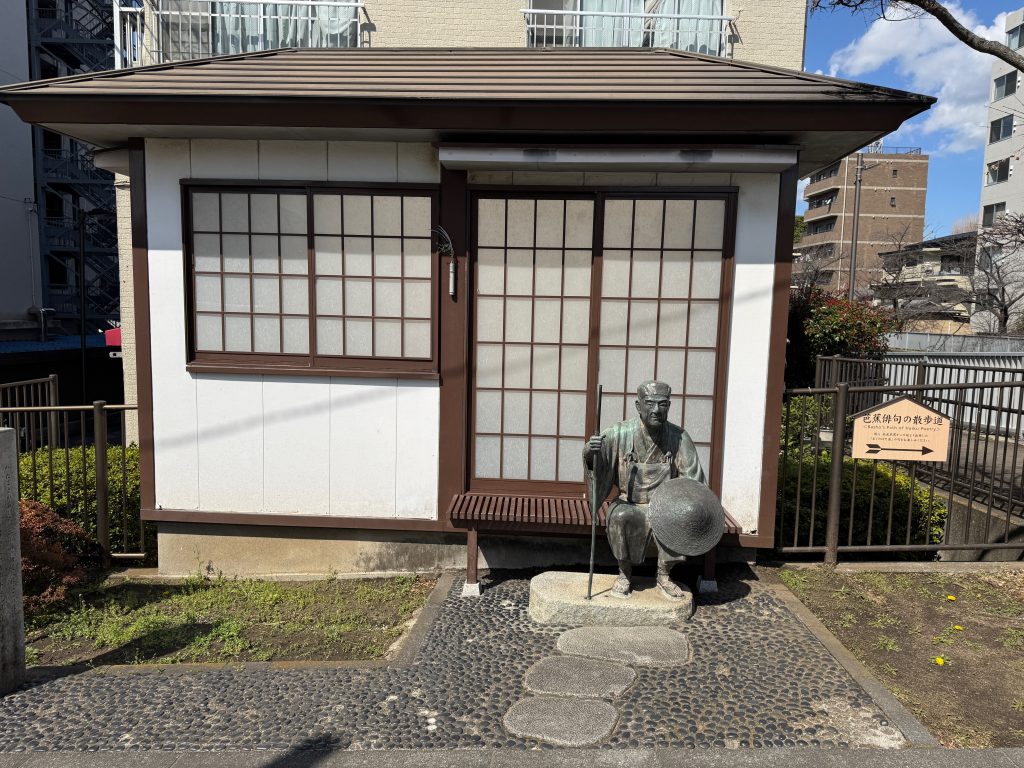
Summary
David spent his morning exploring sites related to the Japanese caste poet Matsuo Bashō on which the first Digital Sojourn, Bashō's Seventh Journey, is based.
While the students went out to engage in some tourism in Asakusa this morning, I decided to seek out the places and spaces related to Bashō that I had missed last year. Last year, I sent my time at the Bashō Memorial Hall. This year, I followed up by following the Bashō Path (for the iPhone and Android).
I decided to return to the Nihonbashi neighborhood where we stayed last year because it has a convenient location and it is quiet at night. We are staying at the Almont Inn, and it is quiet, clean, and efficient. The rooms are quite small, but all we need, and for $63/night, we can’t complain.
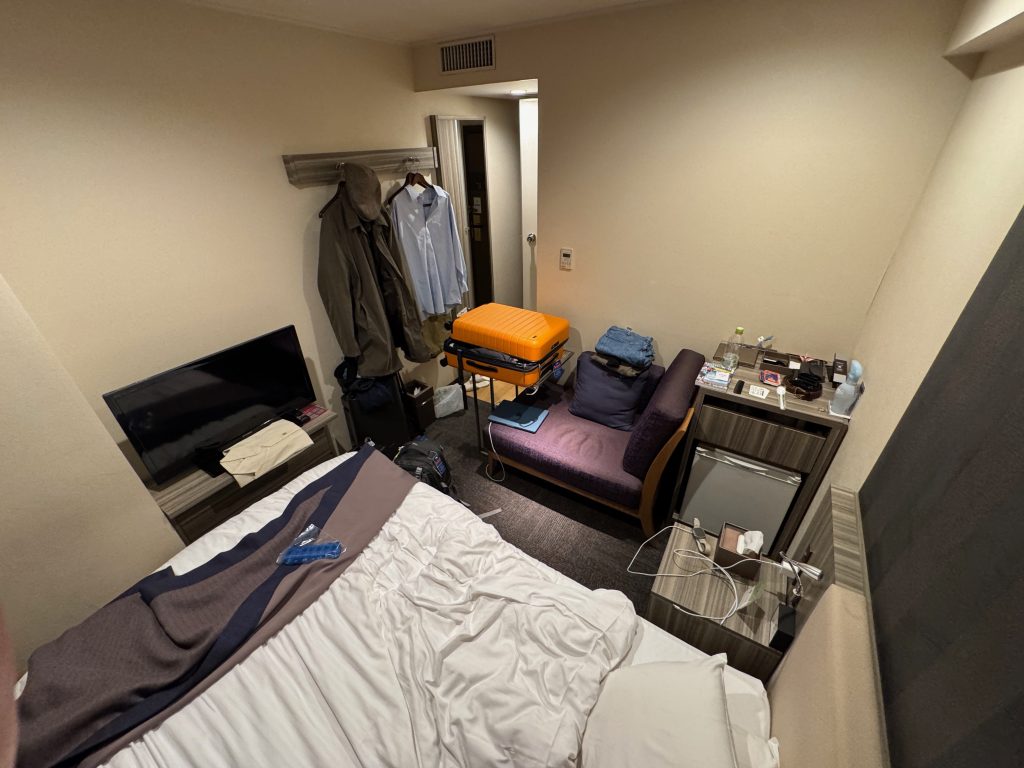
There are many good and friendly restaurants nearby, convenience stores, subway stops, etc.
But for the Bashō enthusiast, the Almont Inn offers unmatched location. Bashō spent his most productive years before his 1689 journey to the Far North in and around this neighborhood. At the time, Nihonbashi was quite a wealthy residential district, so Bashō lived on the far side of the Sumida River, in much more humble and plebeian surroundings.
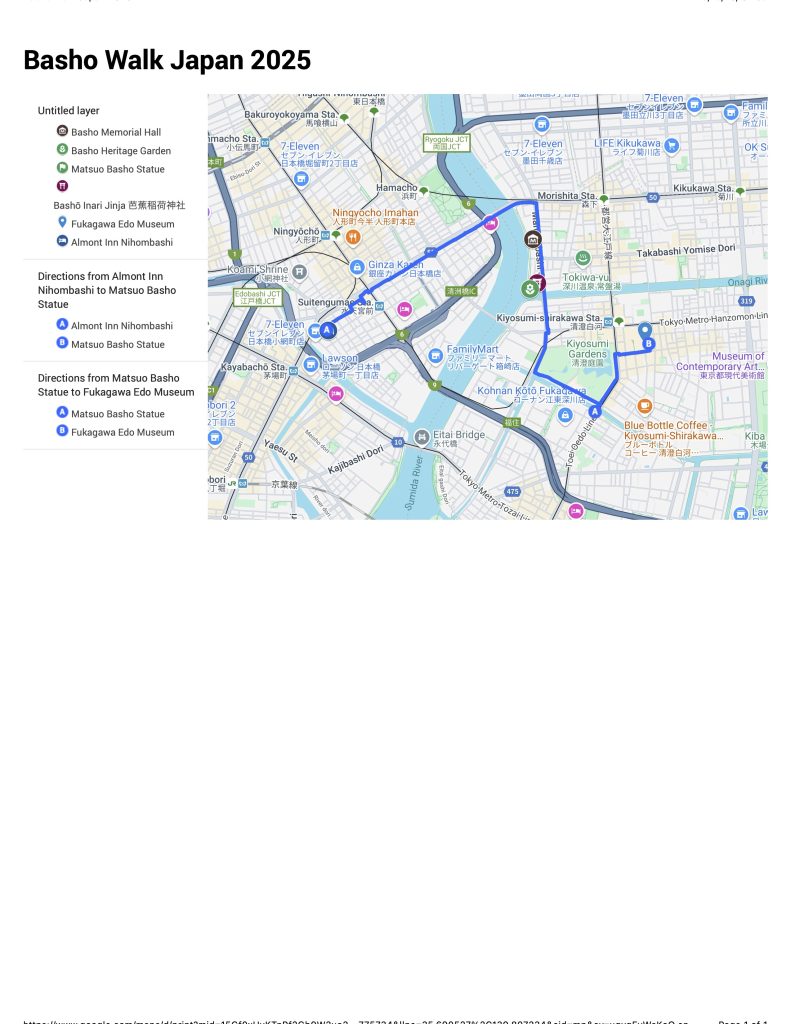
I started at the site of Bashō’s house before he took an earlier voyage, in 1684. This site overlooks the intersection of the larger Sumida and small Onagi Rivers. When stepping off the main street to go back to the site, one is greeting first with a Shintō shrine dedicated to Bashō.

Within the shrine, there was a very pretty ablution font and dipper for those who come to pray.
It was quite peaceful, surrounded by small homes and some workshops, with the aroma of strangely roasted chestnuts or perhaps roasting sweet potatoes in the air. Behind the shrine and up a set of stairs onto a dike, one comes to the Bashō Memorial Garden, with an overview of the intersection of the Onagi and Sumida Rivers, plantings of plants common to Bashō’s time, explanatory plaques, and a statue of Bashō, forever overlooking this serene spot.

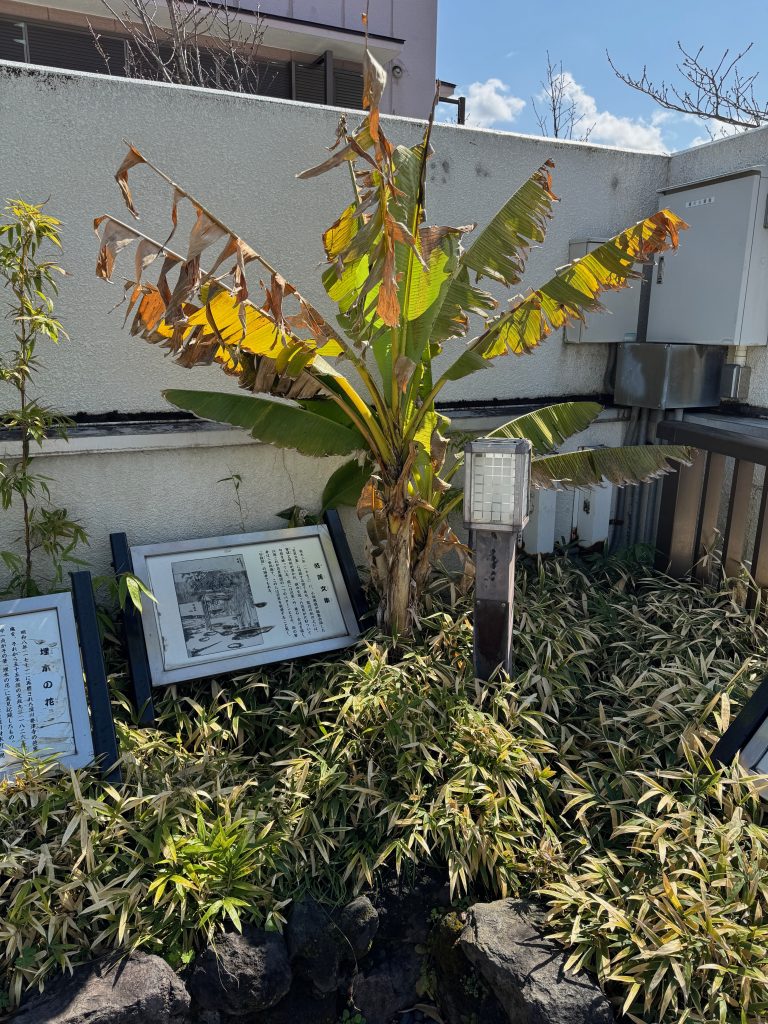
Pressing on from there, I crossed the Onagi River headed toward my final Bashō object, the site of his last lodgings before he began his 1689 trip. That statue is pictured at the start of this blog, but adjacent to it is the start of a “haiku path” that edges the dike along the Sumida River going southward, with many of Bashō’s famous haiku.
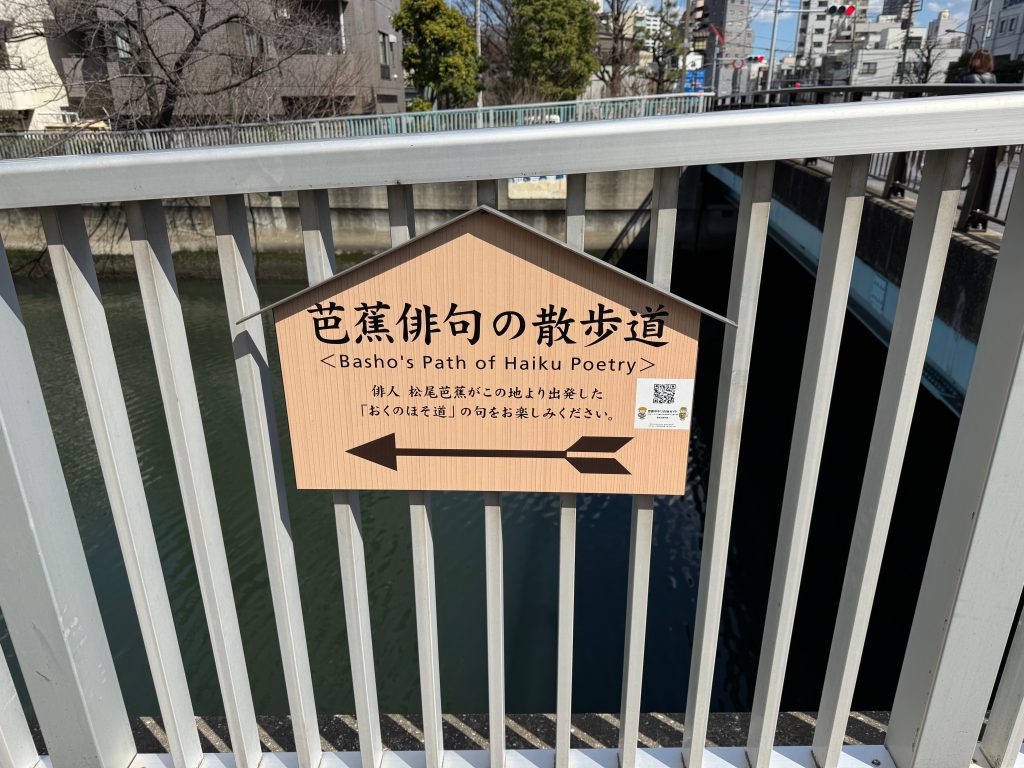
Two notes. I very much like how in Japan there are public restrooms everywhere. Everywhere. No one shooting up. No predators. No graffiti. Relatively clean. One asks, why don’t we have this? If you look at society through the lens of its public restrooms, I think that you learn a lot.
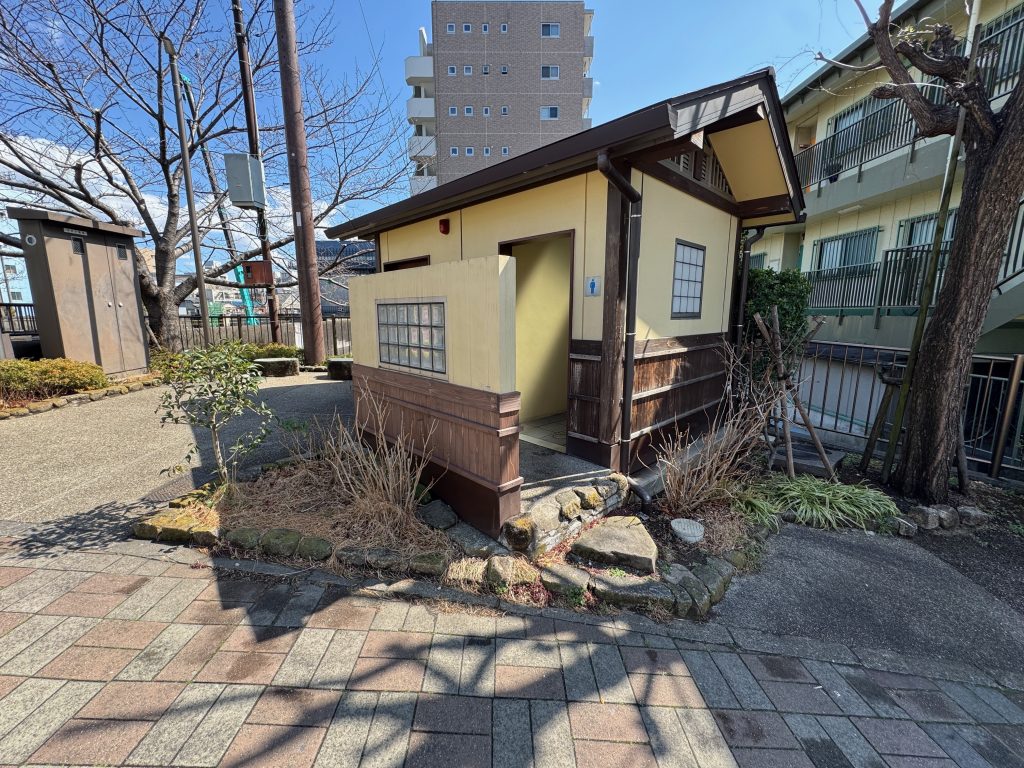
There also seems to be a lot of work being done to control water along the rivers, and many markers indicating how low the city really is. For example, the staircase from the nearby Suitengumae Subway Station has a marker at 1.8 meters…at the top of the stairs. Climate change must be a more frightening reality here than many places.
Onward…
My final stop for this part of the day was the very, very interesting and well done Fukagawa Edo Museum. This museum, attached to the Koto Town Hall, is, in my opinion, very well done. It is in essence a giant diorama of a fairly authentic recreation of a section of the town from the early 1800s, relatively late in the Edo Period. Several typical buildings are represented, there is background sound (a rainstorm, a noisy cat, the sound of a market, the sound of bells for the time). You walk around in and amongst the buildings, you are encouraged to enter them (sans shoes) and there are helpful docents to answer questions. The idea is, it was humble, crowded, and sometimes flooded, but everyone of the same class helped out everyone else get along.
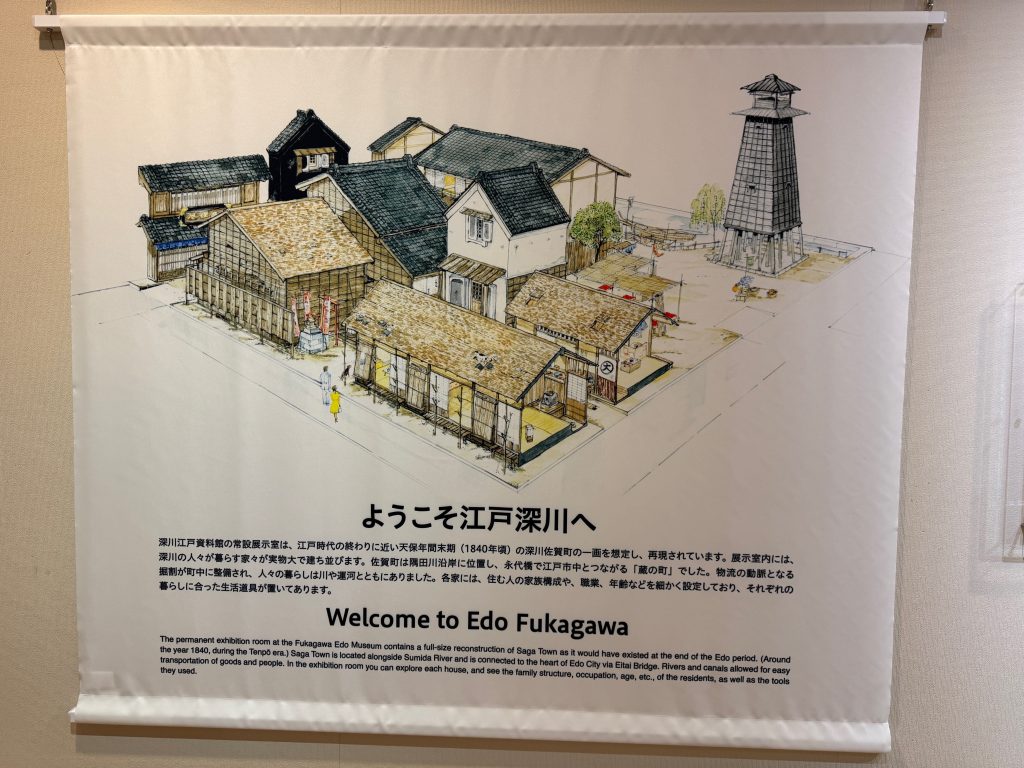
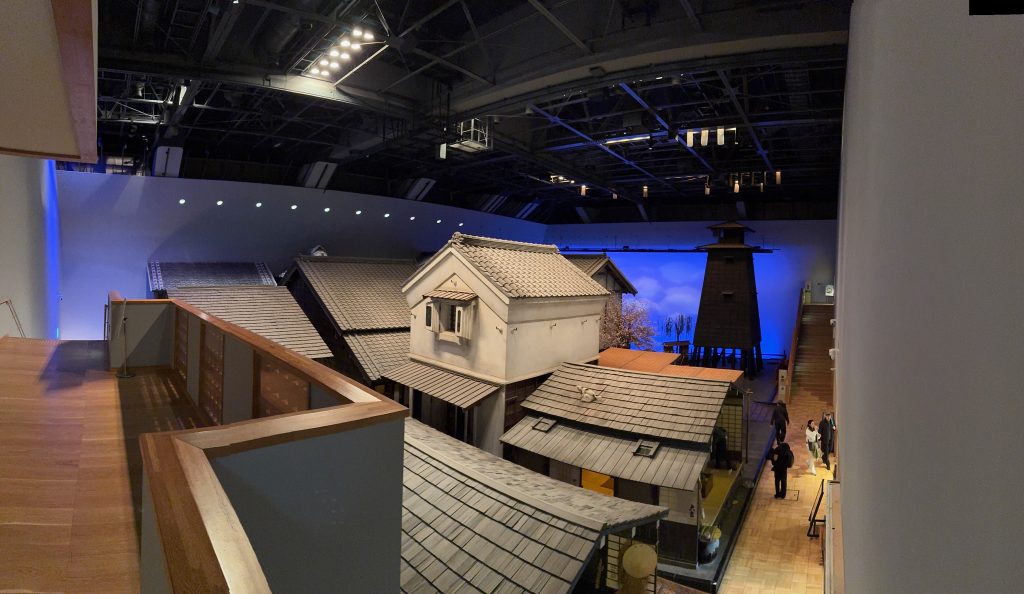
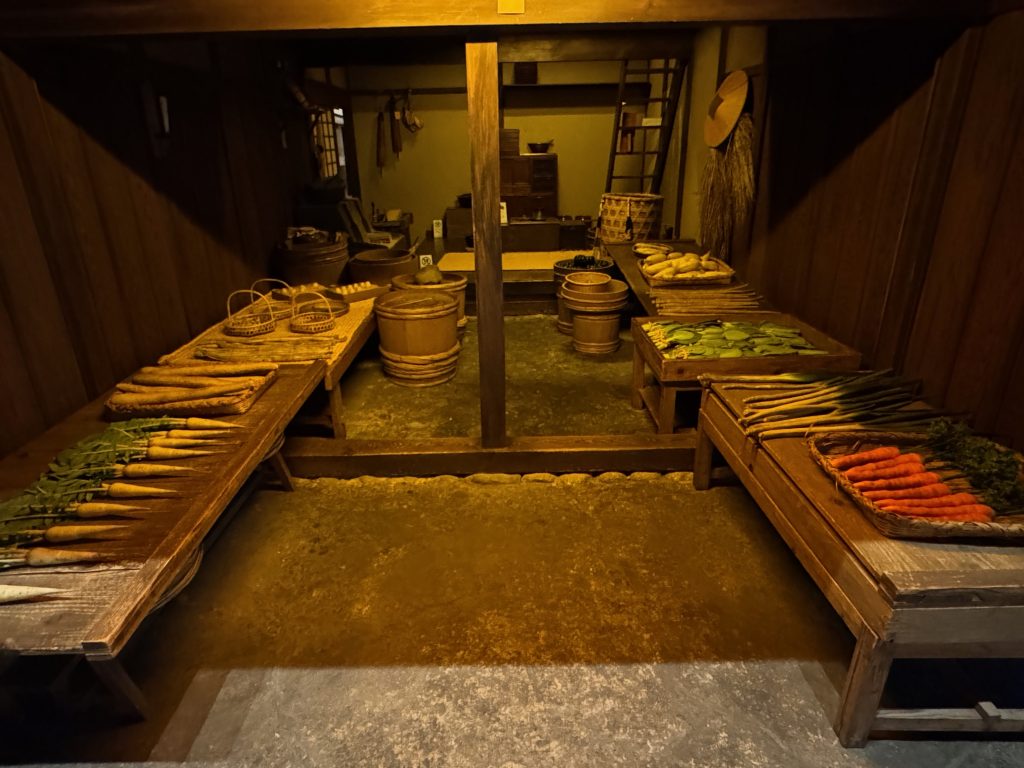
Two helpful and friendly docent tried their best to educate me on the museum. I wish that I actually spoke Japanese.
Following this path gave me time to think about curriculum. The Digital Sojourns concept ties the presentation of content-enhanced 3D immersive space. The question is, how much should that space concern Bashō and his journey and how much the contemporary journey around it?
After this, I felt a little tired so I had a quick snack and sit-down, and then I traveled up to Asakusa to meet my students at the Kura Conveyor Belt Sushi flagship store. Interesting experience. But I will leave them to describe that…
